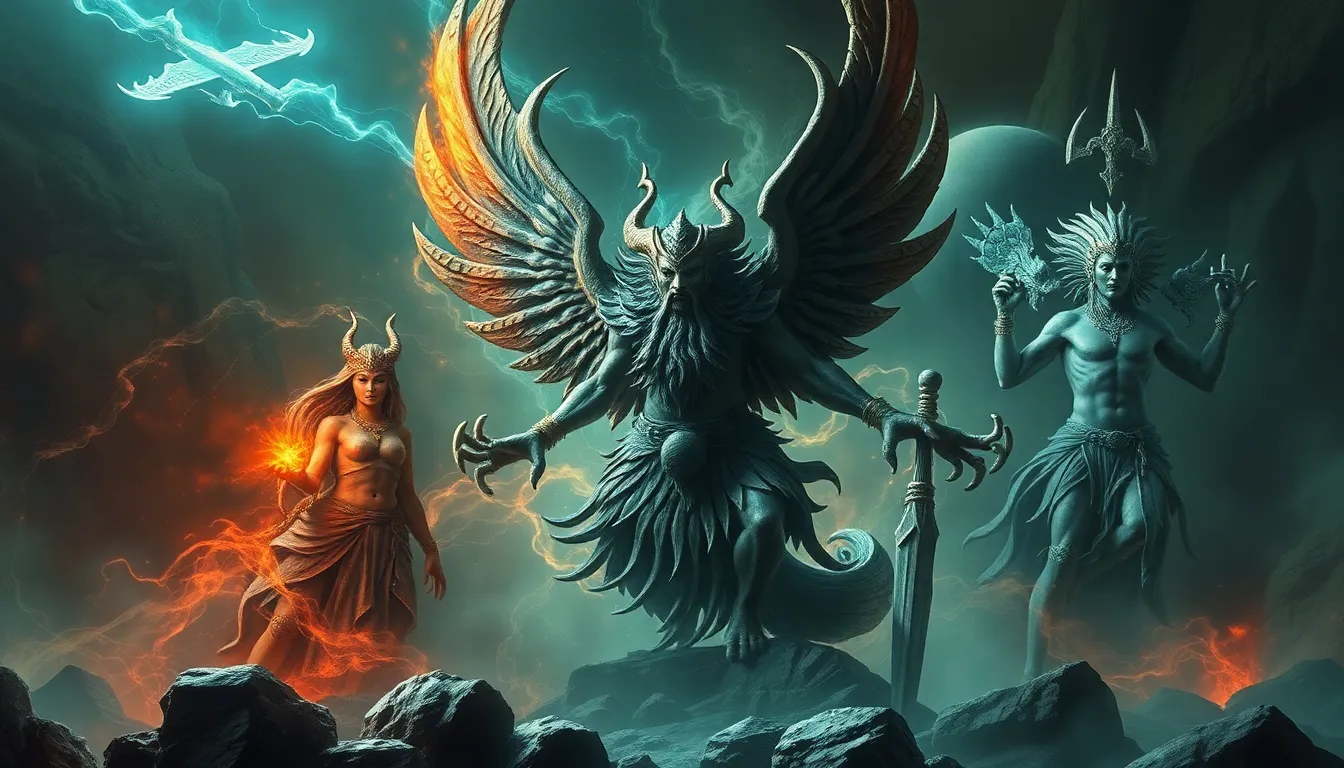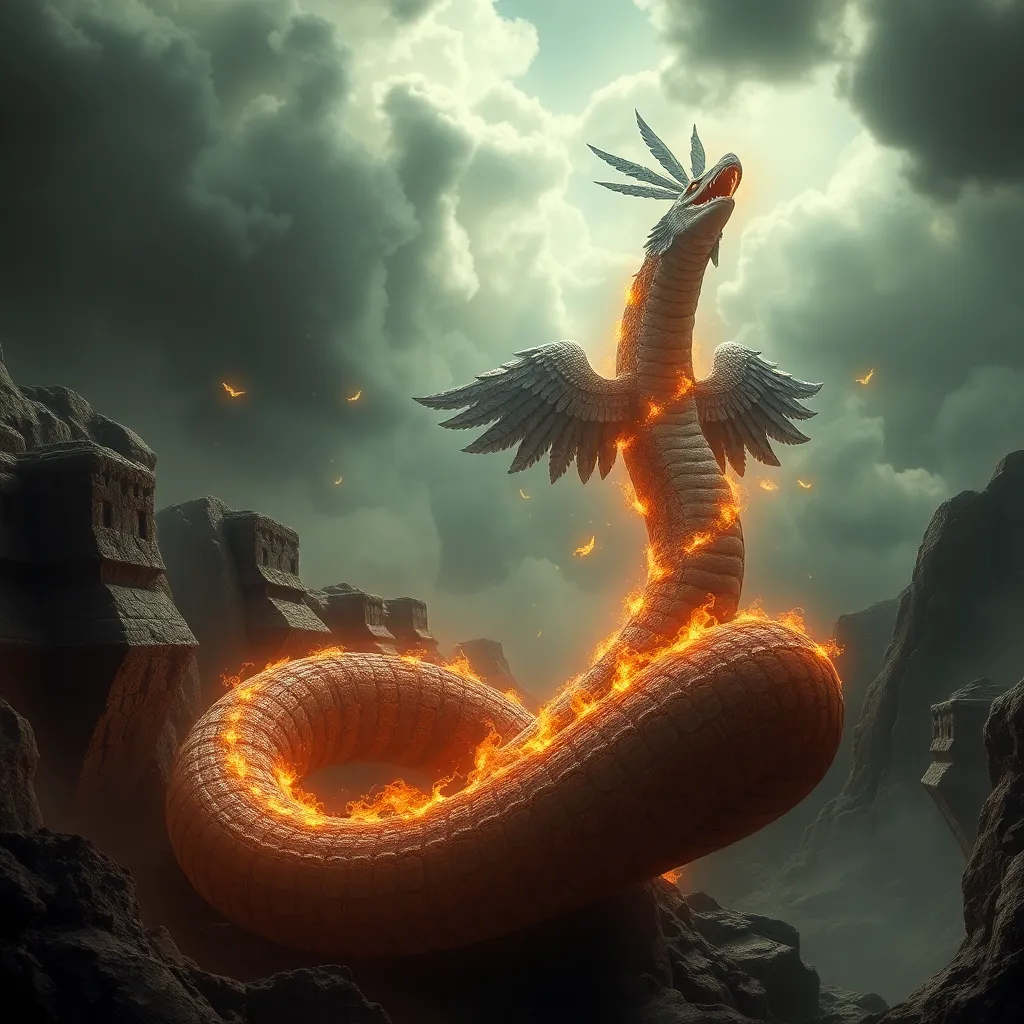The Most Notorious Ancient Deities: Legends of Infamy
I. Introduction
Deities in ancient cultures play a pivotal role in shaping the beliefs, values, and practices of societies. These divine figures are often imbued with traits that resonate with human experiences, including love, war, chaos, and morality. Among these deities, some have gained notoriety, becoming infamous for their actions and the stories that surround them.
The notion of infamy in mythology is not simply about being villainous; it encompasses a broad spectrum of behaviors that challenge societal norms, disrupt order, or provoke fear. This article aims to explore several notorious deities across various ancient cultures, examining their legends and the impact they have had on humanity.
II. Criteria for Infamy in Ancient Deities
Understanding why certain deities achieve notoriety involves examining specific characteristics and cultural contexts:
- Characteristics That Define Notoriety: Infamous deities often exhibit traits like deceit, vengeance, chaos, or destruction.
- Cultural Context and Historical Significance: The cultural background and historical events often shape the perception of these deities.
- The Impact of Infamous Deities on Society and Religion: These figures frequently influence rituals, moral codes, and societal behaviors.
III. The Trickster God: Loki of Norse Mythology
Loki, the trickster god of Norse mythology, embodies chaos and mischief. Originating from the Jötunn (giant) race, Loki is both a companion and an adversary to the gods of Asgard.
His infamous deeds include:
- Tricking the blind god Höðr into killing his own brother, Baldr.
- Stealing the golden apples of immortality.
- Causing the death of the god Baldur, which led to Ragnarok, the end of the world in Norse belief.
Today, Loki’s legacy continues in modern culture, often portrayed in literature, films, and comic books, showcasing his complex nature that balances humor and malevolence.
IV. The Vengeful Goddess: Kali from Hindu Tradition
Kali, a prominent figure in Hindu mythology, symbolizes destruction and transformation. Revered by many, Kali is often depicted with a fierce appearance, adorned with skulls and wielding weapons.
Kali’s tales of destruction often serve as metaphors for the cyclical nature of life and death, showcasing her role as a protector who annihilates evil. Notable aspects of her mythology include:
- The slaying of the demon Raktabija, who could regenerate from his blood.
- Her dance of destruction, which signifies the end of the ego and the beginning of spiritual enlightenment.
Despite her fearsome reputation, Kali is adored by many and represents the duality of creation and destruction, showing that infamy can coexist with deep reverence.
V. The Deceiver: Set in Egyptian Mythology
Set, the god of chaos and disorder, holds a notorious place in Egyptian mythology. Often depicted as a figure representing storms, deserts, and violence, Set’s legacy is marked by his conflict with his brother Osiris.
Key myths involving Set include:
- The murder of Osiris, which led to Osiris becoming the god of the afterlife.
- His battle against Horus, Osiris’s son, for the throne of Egypt.
Over time, Set’s representation has evolved. Initially seen as a necessary force of chaos, he transformed into a symbol of evil, particularly during the later periods of Egyptian history.
VI. The Malevolent Trickster: Eris in Greek Mythology
Eris, the Greek goddess of strife and discord, is often depicted as a malevolent figure who delights in chaos. Her most infamous act is her role in instigating the events that led to the Trojan War.
The story of the Golden Apple is central to her legend:
- Eris throws a golden apple inscribed with “To the fairest” into a gathering of goddesses, leading to a dispute between Hera, Athena, and Aphrodite.
- This dispute ultimately results in the judgment of Paris, which sparks the conflict of the Trojan War.
Eris symbolizes the inherent chaos of human nature and the consequences of envy and rivalry, influencing the way conflict and discord are viewed in both ancient and modern contexts.
VII. The Dark Protector: Hades and the Underworld
Hades, often misunderstood as a malevolent figure, is the Greek god of the underworld. His role is more complex than mere villainy; he is a guardian of the dead and a necessary component of the natural cycle.
Key aspects of Hades’s role include:
- Overseeing the realm of the dead, ensuring that souls are judged and assigned to their respective afterlives.
- Maintaining balance between life and death, which is essential for the continuation of life.
In modern interpretations, Hades is often portrayed in a more sympathetic light, challenging the notion of evil associated with death and the afterlife.
VIII. The Bloodthirsty Warrior: Tezcatlipoca in Aztec Beliefs
Tezcatlipoca, a major deity in Aztec mythology, embodies the duality of creation and destruction. As a god of the night sky, he is associated with conflict, sorcery, and the warrior spirit.
His myths often involve themes of sacrifice and warfare, including:
- Leading to the creation of the world through battles against other gods.
- His role in human sacrifices, which were believed to nourish the gods and ensure the sun’s daily rise.
Tezcatlipoca’s influence on Aztec society was profound, as he represented both the ferocity of war and the necessity of sacrifice in maintaining cosmic order.
IX. The Seductress of Chaos: Lilith in Ancient Texts
Lilith, often regarded as the first wife of Adam in Jewish folklore, represents rebellion and independence. Her origins are shrouded in mystery, and she has evolved into a symbol of female empowerment and chaos.
Key elements of Lilith’s mythology include:
- Her refusal to submit to Adam, leading to her expulsion from the Garden of Eden.
- Her portrayal as a demoness who preys on infants and seduces men, reflecting societal fears of female sexuality.
In modern feminist interpretations, Lilith is embraced as a figure of empowerment, challenging traditional gender roles and celebrating female autonomy.




